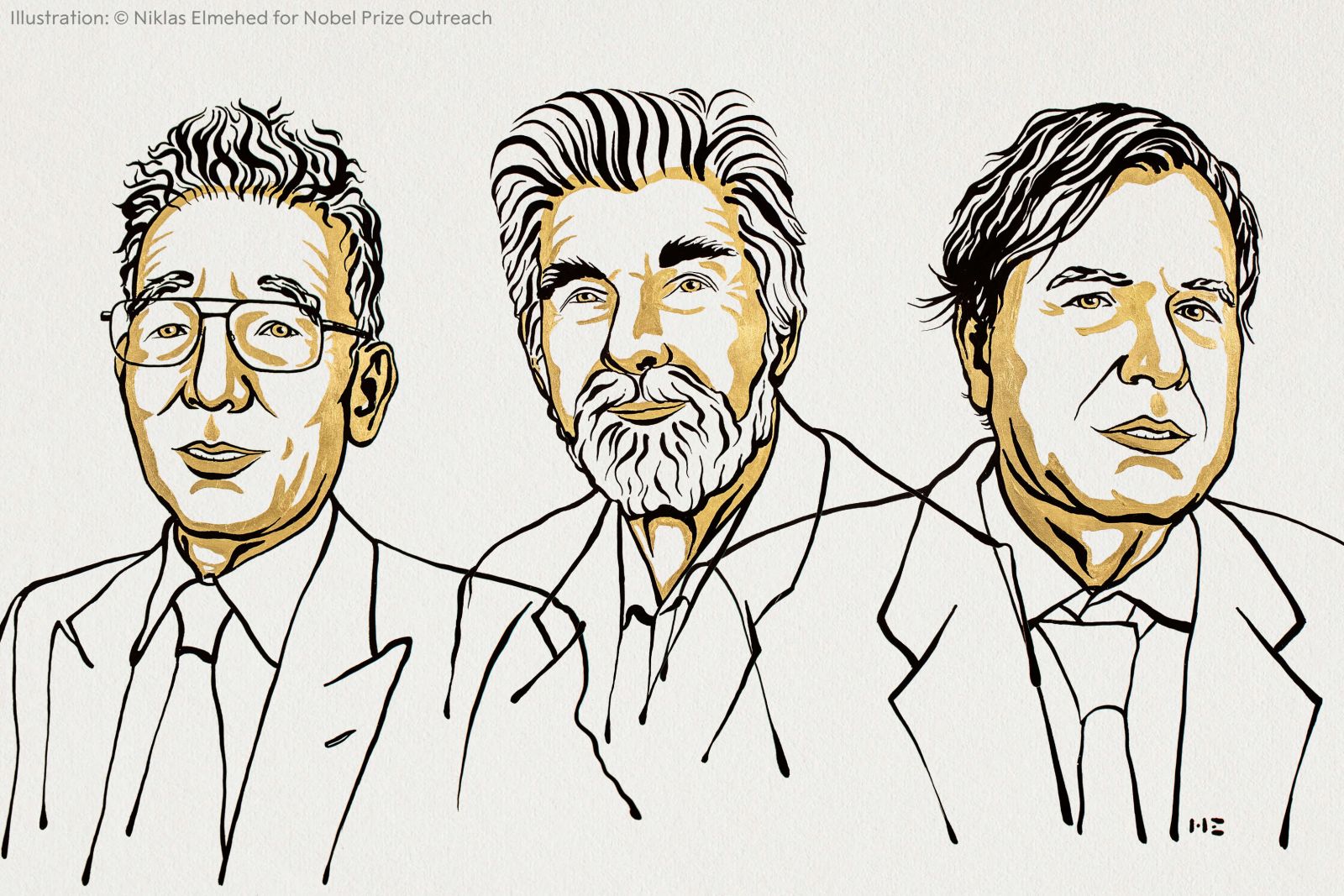
This week the three prestigious Nobel Prizes for science were announced for the fields of Physiology or Medicine, Physics, and Chemistry. Here’s how some of the Academy’s Fellows responded to the announcement.
The 2021 Nobel Prize in Physiology or Medicine was jointly awarded to David Julius and Ardem Patapoutian “for their discoveries of receptors for temperature and touch”.
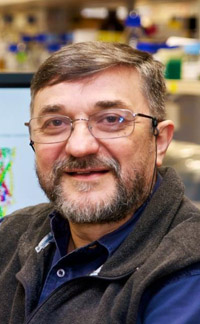
Professor Boris Martinac FAA says:
The award of the 2021 Nobel Prize in Physiology or Medicine to David Julius and Ardem Patapoutian for their discoveries of vertebrate thermo- and mechano-receptors recognises the significance of the evolutionary inherent sensing the surrounding environment and responding to changes within it by the living organisms from bacteria to humans.
Without the ability to receive sensations of touch, hearing, sight, taste, smell, temperature or pain, the outside world would cease to exist for vertebrate organisms, including humans, which emphasises the importance of sensory input for the existence of life. David Julius identified TRPV1 ion channel, a thermoreceptor activated by temperatures above 42oC, which are perceived as painful, whereas Ardem Patapoutian discovered the family of mechanosensitive Piezo ion channels serving as mechanoreceptors in senses of touch and pain.
Prior to these great discoveries, I and my former mentor Ching Kung at the University of Wisconsin-Madison firmly established the existence of mechanosensitive channels through their discovery and characterisation of this type of ion channels in the Escherichia coli bacterium, where they play an essential role in regulation of the cellular osmotic pressure. This breakthrough achieved in the late 1980s led the way to this year’s Nobel Prize for Physiology or Medicine.
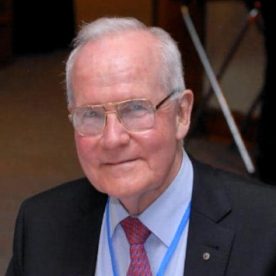
Professor David Burke AC FAA FTSE says:
For over 100 years, researchers have probed how sensory receptors in skin and muscle respond to different inputs, which nerve fibres and nerve cells transmit the signals to the spinal cord, which pathways carry the messages up the spinal cord to the brain, whether the signals are modulated during transmission, and how the arriving information is processed by the brain. Australia has a long history of seminal contributions in these areas of sensation.
The major gap in our knowledge lay in the precise mechanisms through which sensory receptors in skin and muscle translate the applied stimulus (mechanical, thermal, noxious, irritant) into nerve impulses. This gap has been filled by the seminal studies of the Nobel awardees and their research teams. They have identified the molecular changes that allow thermoreceptors to detect changes in temperature, nociceptors to detect noxious stimuli and mechanoreceptors to detect touch, pressure and displacement.
While the focus of the Nobel Prize is on sensation, this seminal research has opened up new avenues for exploration of other bodily functions. The importance of the discoveries is not just theoretical: they identify another mechanism through which sensation can be modulated, alleviating distressing symptoms in patients with peripheral nerve diseases or skin disorders. The promise of this research is that, based on the known underlying mechanisms, medications can now be developed to control, e.g., neuropathic pain, inflammation, excessive sensitivity. Hopefully, agents targeting ion channels on sensory receptors may not have the undesirable addictive properties of opiates.
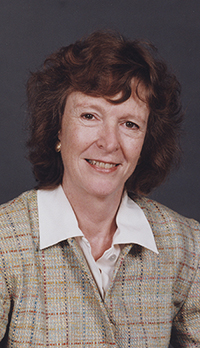
Professor Elspeth McLachlan FAA says:
Neurophysiologists have studied the processes of temperature and touch sensation for over a century, including in Australia. The early research defined the types of nerve fibres that carried signals towards the brain and the brain centres that received these signals and clarified the responses to each specific type of signal. Australians such as Darian-Smith, Goodwin and Rowe (touch), Gandevia (respiration), McCloskey and Gandevia (perception of body position), Korner (cardiovascular and respiratory regulation), have undertaken neurophysiological studies on sensation and sensory reflexes that result from particular stimuli.
Julius and Patapoutian have added a new dimension that expands the possibilities of research into many aspects that were previously impossible. They identified the genes for particular ion channels by expressing them in the membranes of isolated cells and applying the specific stimuli. The family of TRP channels discovered by Julius include TRPV1 (sensitive to capsaicin, which is in chili peppers, and to heat) and TRPM8 (sensitive to cold) as well as several others present on nerve and muscle cells and in the brain. Patapoutian’s main discovery was of mechanosensitive channels which he named Piezo1 (in nerve endings in skin and in visceral organs) and Piezo2 (sensitive to light touch and joint position, to lung stretch). The structure and behaviour of these channels at the molecular level is now being revealed. The distribution of nerves having these channels can be demonstrated in many different tissues and their function investigated by pharmacological or genetic manipulation.
This year’s Nobel Prize in Physics was jointly awarded, with one half going to Syukuro Manabe and Klaus Hasselmann and the other half to Giorgio Parisi, "for groundbreaking contributions to our understanding of complex systems".
The Nobel Prize for Physics was awarded this week with one half jointly going to Syukuro Manabe, Klaus Hasselmann and the other half to Giorgio Parisi.
— Australian Academy of Science (@Science_Academy) October 7, 2021
They have laid the foundation of our knowledge of the Earth’s climate and how humanity influences it. #NobelPrize pic.twitter.com/9YAXeVPwvx
Dr Steve Rintoul AO FAA says:
It is wonderful to see the achievements of Manabe, Hasselmann and Parisi recognised. Their work showed that the complex system that is the Earth can be understood, and that the laws of physics can be used to anticipate the influence of human activities on climate.
While responding to climate change remains an immense challenge, we would be lost without their fundamental advances that have made it possible to make projections of future climate.
For Australia, which is more exposed to climate variability and change than many nations, their work has been of profound importance. The climate model developed and used in Australia can trace a direct lineage to the models developed by Manabe and colleagues at the Geophysical Fluid Dynamics Laboratory in Princeton, and we continue to work closely with them.
Physics of the Earth system has not always been recognised as a legitimate topic for a serious physicist. To see the Nobel Prize in Physics go to earth scientists is recognition of both the difficulty and relevance of understanding how the earth works.
The Nobel Prize in Chemistry 2021 was jointly awarded to Benjamin List and David MacMillan “for the development of asymmetric organocatalysis”.
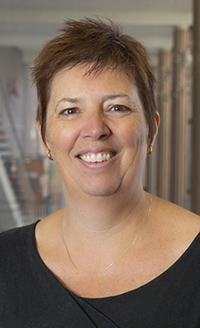
Professor Kate Joliffe FAA says:
The 2021 Nobel prize for the "development of asymmetric organocatalysis" recognises that the development of methods to synthesise new molecular structures or to simply improve the way that we synthesise known structures is extremely powerful. This underlying methodology facilitates the synthesis of molecules for a wide range of applications in our daily lives – from the development of pharmaceuticals, polymers and plastics to new materials for use in solar cells and batteries.
Catalysts are substances used to accelerate and control chemical reactions, but they are not themselves consumed during the reaction. Traditionally, catalysts have been metals or enzymes, but small, chiral organic compounds can catalyse complex reactions. They can also do this in a way that promotes the formation of only one mirror image of ‘chiral’ or ‘handed’ molecules, which is of particular importance in the synthesis of pharmaceuticals. Organocatalysts are generally cheap, easier to produce than enzymes and have lower toxicity than metal catalysts, with potential to make synthetic routes ‘greener’ in the future. For example, a key chiral intermediate in the synthesis of Paroxetine, an antidepressant, can be synthesised on a multigram scale by using an organocatalyst without the need for solvent.
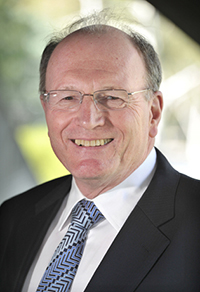
Professor Andrew Holmes AC FAA FTSE FRS says:
The Prize recognises the importance of sterocontrolled organic synthesis. Many pharmaceutical drugs and agrochemicals are manufactured in this manner. Most are chiral, meaning that they can exist in two non-superimposable mirror image forms, just like our hands.
The drug thalidomide was found to cause distressing limb defects in babies born to women who had taken thalidomide to relieve morning sickness. It was withdrawn in 1961, and the cause of the birth defects was attributed to the fact that one of the two mirror image forms of the thalidomide molecule damaged the developing foetus.
It therefore became essential that pharmaceutical companies identified and used just one of the two possible mirror image forms. It is here that organocatalysis comes to the rescue. A catalyst accelerates a reaction without being consumed. Asymmetric organocatalysis involves molecular catalysts of a chemical reaction that deliver just one of the two possible mirror image forms of a chiral product. These organocatalysed reactions can now make single mirror image forms of numerous molecules more efficiently than enzymic processes. Organocatalysis is replacing metal-mediated catalysis in synthesis, thus leading to more sustainable manufacturing processes. It is practised widely in Australian universities, in CSIRO and industry.
Find out more about the 2021 Nobel Laureates and their work at the 2021 Nobel Prizes website.
© 2025 Australian Academy of Science